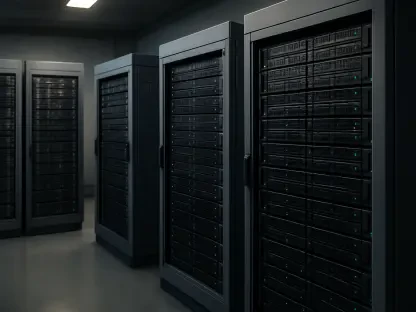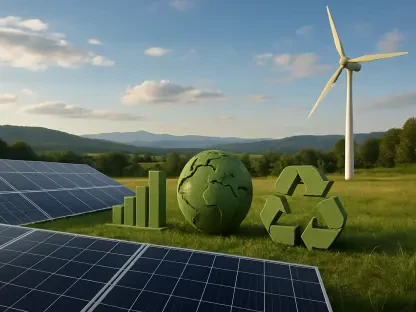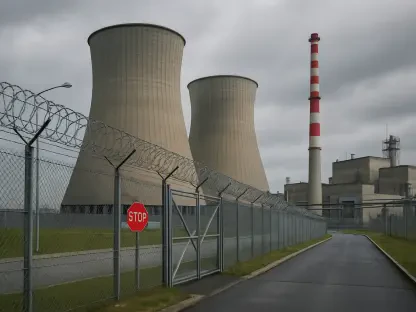In this interview, we have Christopher Hailstone, an expert in energy management, renewable energy, and electricity delivery. He will provide insights into the anticipated growth in U.S. electricity demand, the role of various factors in this growth, and the impact of federal policies and incentives.
Can you explain the anticipated 2% annual growth in US electricity demand?
The U.S. electricity demand is projected to grow at an annual rate of 2%, leading to a 50% increase by 2050. This growth is primarily driven by the rising need for electricity in numerous sectors, including data centers, building electrification, and transportation.
What are the primary factors contributing to this increase in electricity demand?
The main contributors to the increased electricity demand include the expansion of data centers, the electrification of buildings and industrial systems, and the growing adoption of electric vehicles. These areas are experiencing significant technological advancements and increasing reliance on electricity to reduce carbon footprints and improve efficiency.
How significant is the role of data centers in driving this growth? Why do you expect a 300% increase in electricity demand from data centers?
Data centers play a crucial role in this growth. The rapid digital transformation and the proliferation of cloud computing services are major drivers for the 300% expected increase in electricity demand from data centers. As more businesses and services migrate to the cloud, the need for reliable and substantial power supplies to data centers will significantly escalate.
Besides data centers, what other areas will see increased electricity demand?
Other areas that will see a rise in electricity demand include building electrification, such as heating and cooling systems, industrial electrification for manufacturing processes, and the transportation sector with the increased deployment of electric vehicles.
How is building electrification influencing electricity demand?
Building electrification contributes to increased electricity demand as more residential and commercial properties transition to electric heating, cooling, and cooking systems. This shift reduces reliance on fossil fuels and enhances energy efficiency, but it also requires a more robust and capacious electrical grid.
What role does industrial system electrification play in the projected demand growth?
Industrial system electrification plays a vital role in the demand growth as industries adopt electric machinery and processes to enhance efficiency and lower emissions. Electrifying industrial operations not only boosts productivity but also aligns with environmental sustainability goals, contributing to the overall increase in electricity consumption.
Can you elaborate on the impact of e-mobility on electricity demand?
E-mobility, particularly the rise of electric vehicles, significantly impacts electricity demand. As more consumers and businesses shift to electric vehicles to reduce emissions and fuel costs, the demand for electricity for vehicle charging infrastructure grows. This shift necessitates advancements in grid capacity and charging solutions to accommodate the increased load.
What specific policies do you believe are needed to meet this growing demand? How can federal policy help? What incentives do you think will be most effective?
To meet the growing electricity demand, we need comprehensive energy policies that support grid modernization, incentivize renewable energy adoption, and promote energy efficiency. Federal policies can provide funding for infrastructure upgrades and research and development for new technologies. Effective incentives include tax credits for renewable energy projects, grants for grid enhancements, and subsidies for energy-efficient appliances and electric vehicles.
How has the Inflation Reduction Act (IRA) contributed to the electrical manufacturing industry so far?
The Inflation Reduction Act (IRA) has significantly contributed to the electrical manufacturing industry by incentivizing domestic production and reducing dependency on foreign imports. It has led to a 20% decrease in reliance on Chinese imports and encouraged investment in local manufacturing capabilities.
Can you describe the changes in dependence on Chinese imports due to the IRA?
Due to the IRA, the dependence on Chinese imports has decreased by about 20%. This shift has been driven by incentives for domestic production and the emphasis on building a resilient and self-sufficient manufacturing industry to support the growing electricity demand.
What additional incentives from the IRA could be expanded, and why?
Additional incentives from the IRA that could be expanded include those for manufacturing and deploying distribution transformers and other essential grid components. Expanding these incentives would help accelerate grid modernization and ensure that the infrastructure can support the increasing electricity load.
How do you see the recent $1.5 trillion in spending cuts and $4.5 trillion in tax cuts affecting the energy sector? What specific cuts might impact energy spending? How do you think these cuts will be balanced with the need for clean energy investment?
The recent spending and tax cuts could impact the energy sector by reducing available funds for clean energy projects and grid enhancements. Specific cuts that target energy programs may slow progress in renewable energy adoption and infrastructure upgrades. However, balancing these cuts with the urgent need for clean energy investment will be critical. Stakeholders must advocate for preserving and even increasing funding for essential energy initiatives to ensure continued growth and sustainability.
How do the current policy changes impact job creation within the electrical manufacturing industry?
Current policy changes, such as the IRA, positively impact job creation within the electrical manufacturing industry by fostering domestic production and encouraging investments in new technologies. These policies create opportunities for skilled labor and support the growth of a sustainable and resilient energy sector.
What message would you like to convey to lawmakers regarding clean energy investments and their benefits?
I urge lawmakers to recognize the long-term benefits of clean energy investments for economic growth, job creation, and environmental sustainability. These investments are crucial for building a resilient energy infrastructure that can meet future demands while reducing carbon emissions. Bipartisan support for clean energy initiatives will ensure that all communities, regardless of political affiliation, can benefit from the economic and environmental advantages.
Can you provide an example of how investments in clean energy benefit both red and blue districts?
Investments in clean energy can create jobs and stimulate economic development in both red and blue districts. For example, a wind farm project in a rural area can provide local construction jobs, enhance tax revenues for the community, and offer long-term employment opportunities in maintenance and operations. These benefits extend across political boundaries, contributing to regional economic stability and energy independence.
Do you have any advice for our readers?
My advice for readers is to stay informed about energy policies and their implications on our daily lives. Advocate for sustainable energy practices in your communities and support local and national initiatives that promote renewable energy and grid modernization. By staying engaged and proactive, we can collectively contribute to a more sustainable and resilient energy future.









